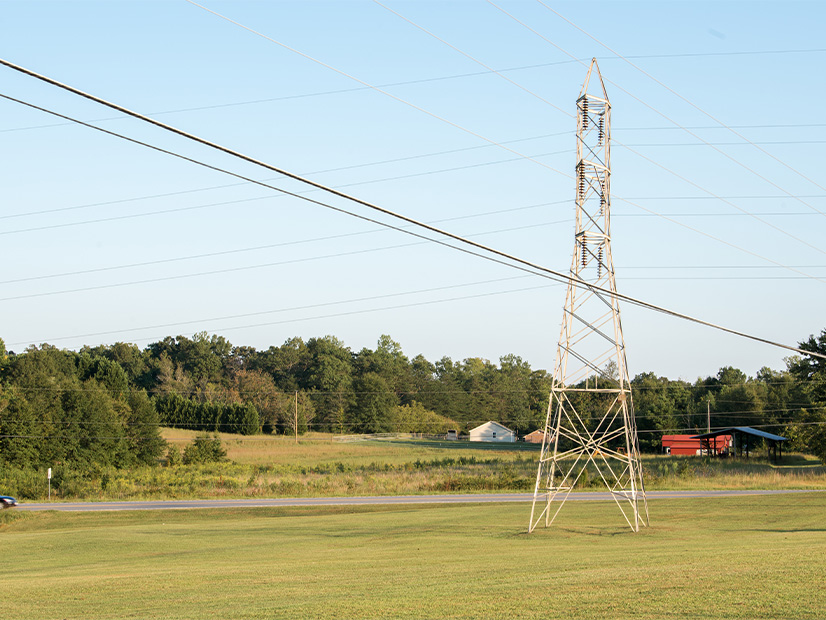In a filing with FERC on Wednesday, members of the Southeast Energy Exchange Market (SEEM) confirmed they would implement the “transparency enhancements” to the market that they previously promised, despite the lack of a commission order requiring them to do so (ER22-476).
The SEEM agreement went into effect Oct. 12 after FERC split 2-2 on approval. With the commission unable to form a majority for or against it, the agreement became effective under Section 205 of the Federal Power Act. (See SEEM to Move Ahead, Minus FERC Approval.) FERC has since approved revisions to four of the participating utilities’ tariffs implementing the special transmission service used to deliver the market’s energy transactions. (See FERC Accepts Key Tariff Revisions to SEEM.)
Earlier this year SEEM members — a group of utilities that includes Southern Co. (NYSE:SO), Dominion Energy South Carolina (NYSE:D), LG&E and KU (NYSE:PPL), the Tennessee Valley Authority and Duke Energy (NYSE:DUK) — proposed several modifications to the agreement in response to FERC’s deficiency letter and objections from the market’s detractors. (See SEEM Members Offer Rule Changes.)
Changes Offered in Previous Deficiency Response
Because the agreement entered operation by default rather than via a commission order, it did not include any of those modifications; however, according to the latest filing, SEEM members “have always intended to fulfill the commitments” they made both because “it is the right thing to do and … to do otherwise might raise questions” regarding the market’s legitimacy. The proposed changes include:
- weekly submissions of confidential market data to FERC and the market auditor, and periodically providing additional information publicly;
- disclosure of regulators’ questions and answers, as well as market auditor reports, to participants, subject to restrictions on access to confidential information by marketing function employees;
- clarification that available transfer capacity calculated by participating transmission providers must be provided to the SEEM administrator and must be used in the algorithm for each leg of any contract path to ensure transmission will not exceed available capacity;
- updating market auditor functions to clarify that the auditor will verify compliance with market constraints;
- use of randomization to resolve ties or ambiguities between multiple bids or offers;
- prohibiting market-based rate holders from providing false or misleading information to the SEEM administrator or market auditor; and
- implementing a posting requirement for complaints submitted to the market auditor.
In addition, members promised to make the “just and reasonable standard” the default for most SEEM rules rather than the lower Mobile-Sierra public interest standard. The use of Mobile-Sierra was a sticking point for FERC Chair Richard Glick, who in a statement explaining his vote against SEEM said the commission’s monitoring capabilities and enforcement authorities would be “hamstrung” by the doctrine’s application. (See FERC’s Christie Accuses Glick, Clements of Prejudice for RTOs.)
Commissioner Allison Clements also cited the use of Mobile-Sierra in her statement against SEEM. Several of the market’s most vocal critics have criticized the doctrine as well, even going so far as to say that proponents’ offer to voluntarily restrict the application of Mobile-Sierra would still unacceptably limit market participants’ negotiating power. (See SEEM Opponents File Rehearing Requests.)
Nov. 25 Effective Date Requested
SEEM members asked that their proposed changes become effective Nov. 25, one day after their filing, and that the commission waive prior notice requirements in order to allow the new revisions to become effective before the incurrence of vendor costs, which could begin as early as next month. Members noted that if prior notice requirements are not waived, the commission is required to act on the filing within 60 days. They also reminded the commission that Section 205 mandates that FERC “not go ‘beyond approval or rejection’” of an amendment proposal.
“Rejection or acceptance of the amendments are the only permissible outcomes of this Section 205 proceeding,” the members said. “The commission cannot, in this proceeding, revisit the justness and reasonableness of the existing provisions of the [SEEM] agreement, except and only to the extent that the members propose … to change such provisions.”
FERC is also considering a rehearing request filed earlier this month by two ad hoc groups of SEEM’s opponents. The fate of both filings may be impacted by the U.S. Senate’s recent confirmation to FERC of D.C. Public Service Commission Chair Willie Phillips, who will join Glick and Clements as the third Democrat on the commission. (See Senate Confirms FERC Nominee Willie Phillips.)



